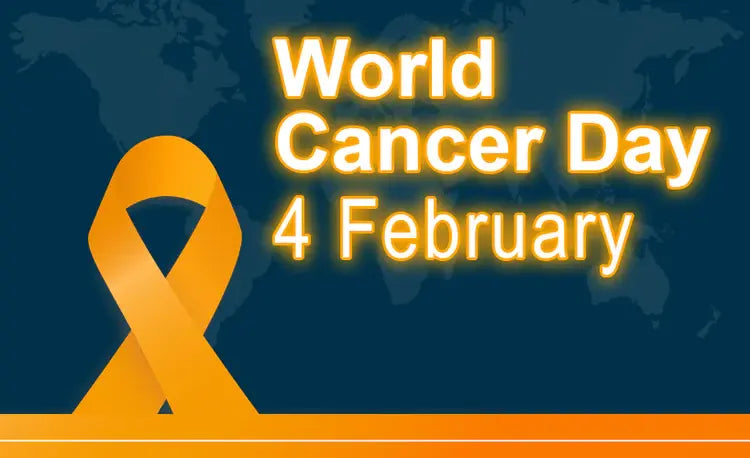
Empowering Cancer Awareness: Understanding, Prevention, and Action
Table of Contents
Introduction
Raising awareness about cancer is crucial worldwide, as the disease affects millions of people every day. We can reduce cancer incidence and promote healthier lifestyles across communities by fostering awareness and encouraging proactive steps. Every year, during February, the Cancer Prevention Action Week is observed to raise awareness about cancer prevention strategies.
This year, the Cancer Prevention Action Week is scheduled from February 19 to 25. The focus is on the theme "Close the Care Gap." The goal, aligned with the First Nations Health Authority (FNHA), is to ensure culturally safe, equitable healthcare free from discrimination. This dedicated time emphasizes the importance of early detection, prevention, and quality care for individuals of all backgrounds.
Understanding Cancer: Causes and Prevention
Cancer is characterized by abnormal cell growth, often forming tumors that can spread to vital systems like the digestive, nervous, and circulatory systems if left untreated. While some factors contributing to cancer are beyond modification, addressing behavioral and dietary risks can prevent around one-third of cases.
Cancer affects people of all ages, races, and backgrounds, and it is essential to understand its nuances and take proactive steps. It can be prevented by reducing behavioral and dietary risks. Educating individuals about their lifestyle choices can reduce the incidence of cancer in our communities.
Different Types of Cancers
Cancer takes on many forms, each with unique treatment challenges. Understanding variations is crucial for symptom recognition, screenings, and informed decisions. Here's an overview of some common types:
Recognizing Cancer: Signs and Symptoms to Watch For
Signs of cancer differ depending on type and stage. Common indicators to watch for include:
- Unexplained Weight Loss: Significant and unexplained weight loss, mainly if it occurs rapidly, can be a sign of various types of cancer.
- Fatigue: Persistent fatigue that doesn't improve with rest can sometimes be an early cancer symptom.
- Changes in Bowel or Bladder Habits: Constant changes in bowel movements, such as experiencing diarrhea or constipation, blood in urine or stool, or changes in urine frequency. These can be symptoms of colorectal, bladder, or prostate cancer.
- Persistent Cough or Hoarseness: A persistent cough, hoarseness, or difficulty swallowing can be signs of lung, throat, or esophageal cancer.
- Changes in Moles or Skin Lesions: Changes in the size, shape, color, or texture of moles or skin lesions, as well as the appearance of new skin growths, should be evaluated by a healthcare professional, as they can indicate skin cancer.
- Persistent Pain: Persistent pain that doesn't go away, especially if it is localized and unrelated to any known injury or trauma, can be a symptom of various types of cancer.
- Unexplained Bleeding: Unexplained bleeding or bruising, such as bleeding between periods, bloody discharge from the nipples, or blood in the urine or stool, can be signs of certain cancers, including leukemia and colorectal cancer.
- Difficulty Swallowing: Persistent difficulty swallowing or a feeling of food getting stuck in the throat could be a symptom of esophageal or throat cancer.
- Changes in Breast Tissue: Any alterations in the size, shape, or texture of breast tissue, including the presence of lumps or nipple discharge, warrant evaluation by a healthcare professional, as they could signify the presence of breast cancer.
- Persistent Indigestion or Difficulty Eating: Consistent indigestion, difficulty swallowing, or discomfort post-eating may indicate stomach or esophageal cancer and should prompt medical attention.
Early identification and prompt treatment of cancer can substantially enhance outcomes. If you encounter persistent or troubling symptoms, do not hesitate to seek medical guidance.
Understanding the Impact of Cancer: Incidence and Awareness
The annual incidence of cancer in the United States underscores the urgent need for sustained awareness and action. It is estimated that around 2.0 million people in the United States will be diagnosed with cancer in the year 2023. Out of these cases, the most common cancer diagnosis is expected to be breast cancer, with an estimated 297,790 cases in women and 2,800 cases in men. These statistics emphasize the widespread impact of cancer on American society and highlight the need for continued progress in research, prevention, and treatment. By recognizing the extent of the problem, we can efficiently allocate resources and support policies that prioritize public health.
Taking Precautions and Government Action Against Cancer
To reduce the risk of cancer, individuals should develop healthy habits such as following a balanced diet, exercising regularly, avoiding tobacco, limiting alcohol consumption, and taking measures to protect themselves from the sun's harmful rays. It's essential to be aware of one's family medical history and to follow recommended screening guidelines for early detection.
The US government, through agencies such as the National Institutes of Health (NIH), Centers for Disease Control and Prevention (CDC), and National Cancer Institute (NCI), takes the lead in cancer-related research, education, and policy development. These efforts involve targeted funding, public health campaigns, and legislative advocacy that aim to reduce disparities in cancer incidence and outcomes while providing support to patients, survivors, and caregivers across the country.
Key Cancer Facts
- Cancer is the second most common cause of death globally.
- Approximately 10 million individuals succumb to cancer each year.
- Over 40% of cancer-related fatalities stem from preventable factors like smoking, alcohol consumption, poor dietary habits, and lack of physical activity.
- Routine screening and early detection, coupled with timely treatment, could prevent at least one-third of all cancer-related deaths.
- Low-to-middle-income countries bear the brunt of approximately 70% of cancer fatalities.
- Implementing suitable prevention, early detection, and treatment methods could save millions of lives annually.
- The estimated cost of cancer on the global economy every year is approximately US$1.16 trillion.
____________
Sources:
